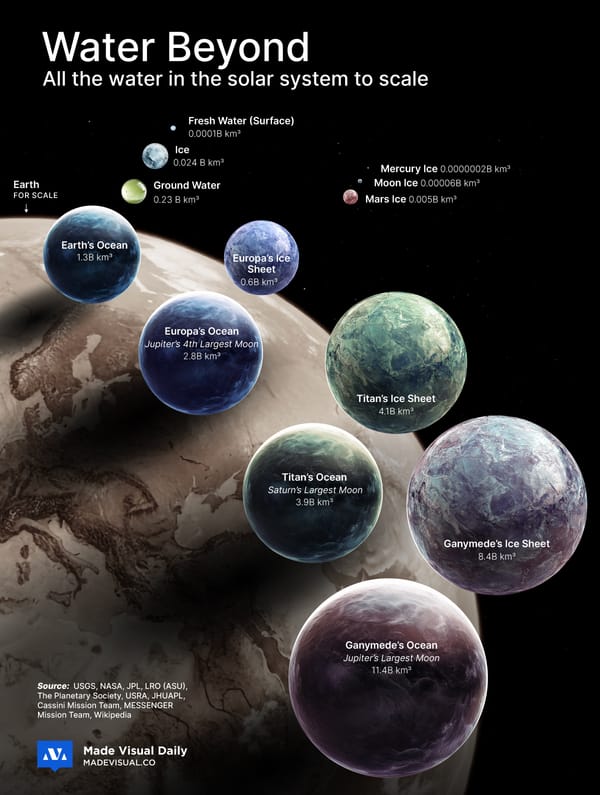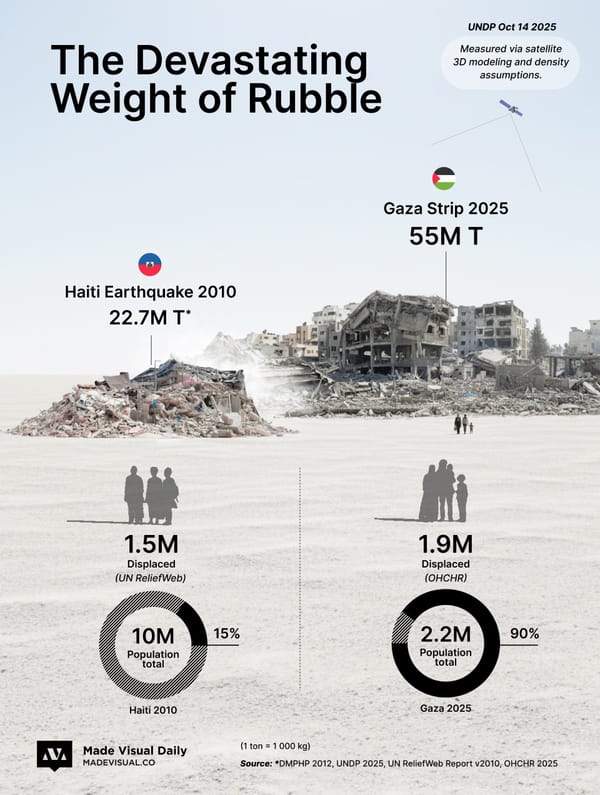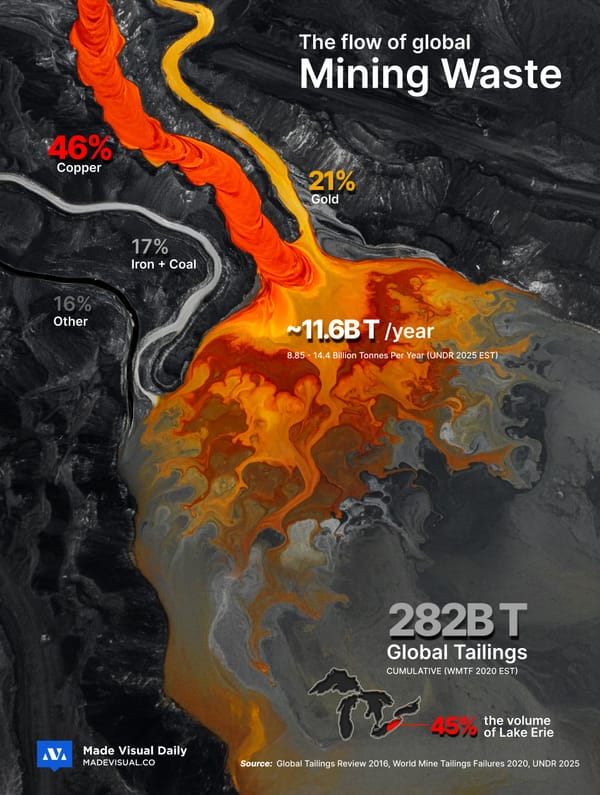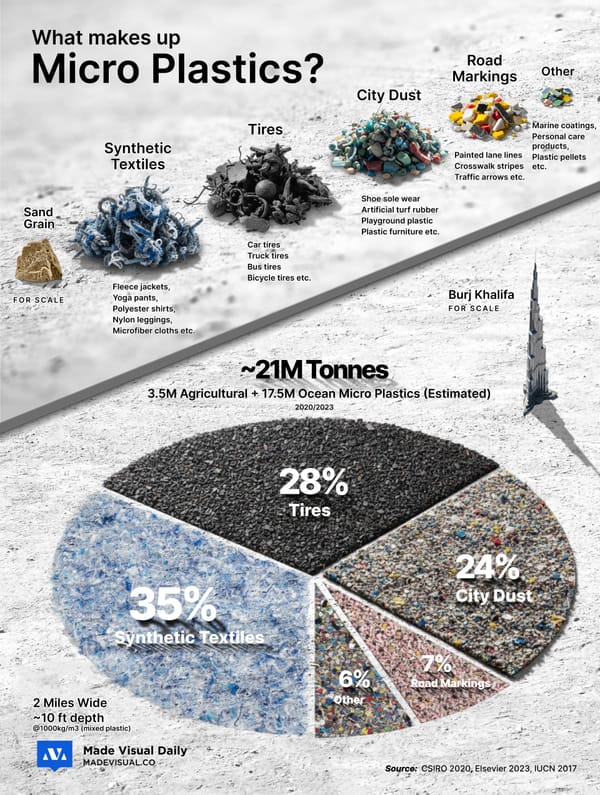The poor state of global farmland
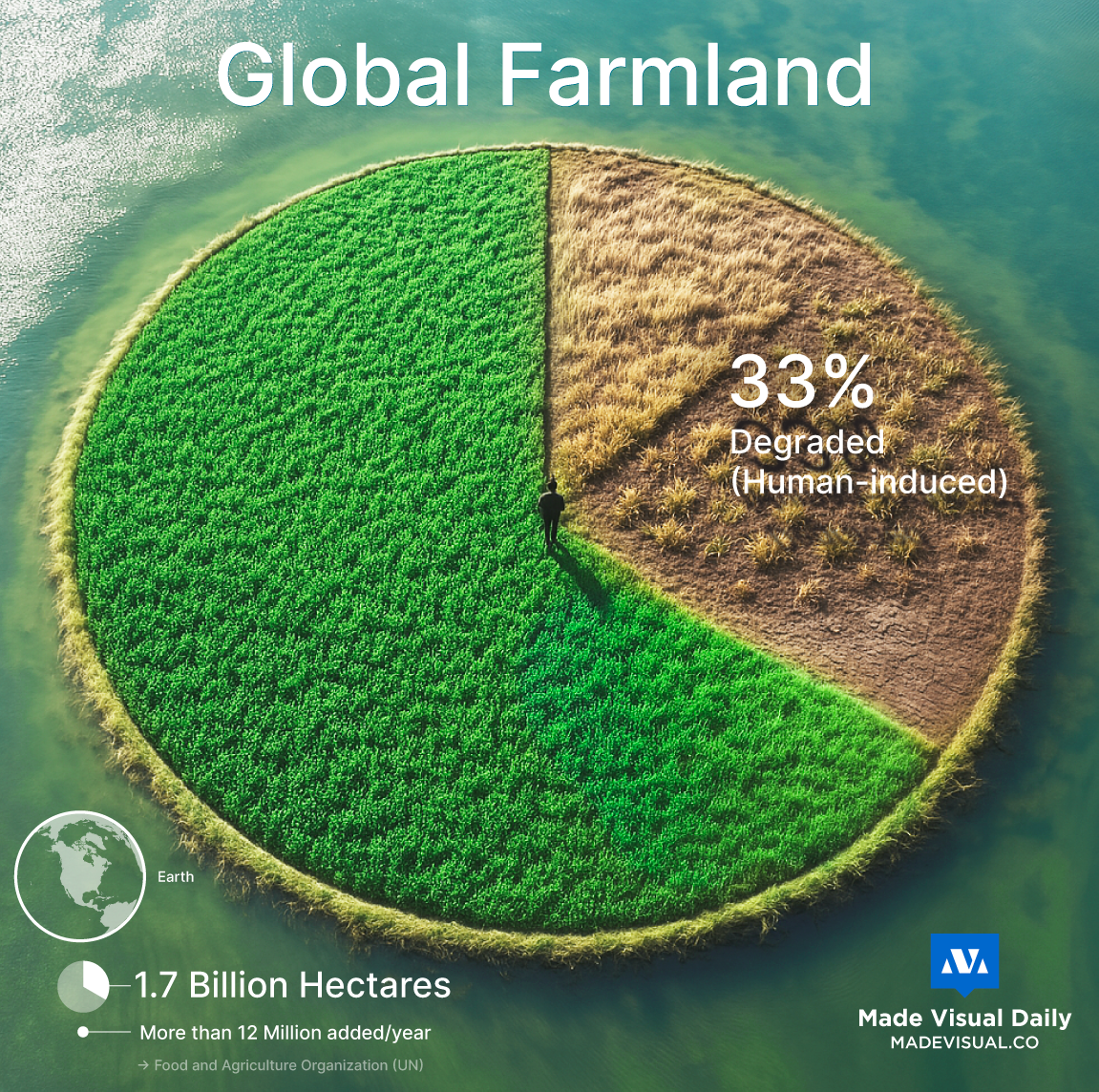
Roughly 33% of the world’s farmland — about 566 million hectares — is degraded due to human activity, threatening food security and ecosystem health.
Agricultural Land Degredation: Farmland that has lost its ability to produce food due to human activities like deforestation, overgrazing, poor farming practices, and pollution. Land degradation leads to declining soil fertility, lower crop yields, and ultimately puts pressure on forests and ecosystems as more land is cleared to compensate. Note that not all degraded land is equally damaged or beyond recovery
The data comes from the Food and Agriculture Organization (FAO) of the United Nations. According to FAO, the world currently uses 1.7 billion hectares of land for agriculture. Of that, one-third has suffered degradation — driven by deforestation, overgrazing, poor irrigation, and chemical overuse.
Related Facts:
🌍 The world loses over 12 million hectares of productive land every year — an area the size of Greece.
🚜 Soil degradation affects over 3.2 billion people worldwide.
🌾 Degraded farmland produces less food with more effort, increasing reliance on fertilizers and accelerating environmental harm.
🌳 Restoring just 15% of degraded land could prevent up to 60% of biodiversity loss, per the UN Convention to Combat Desertification (UNCCD).
🔁 Land restoration is considered a cost-effective climate solution, offering strong returns in food security and carbon sequestration.


